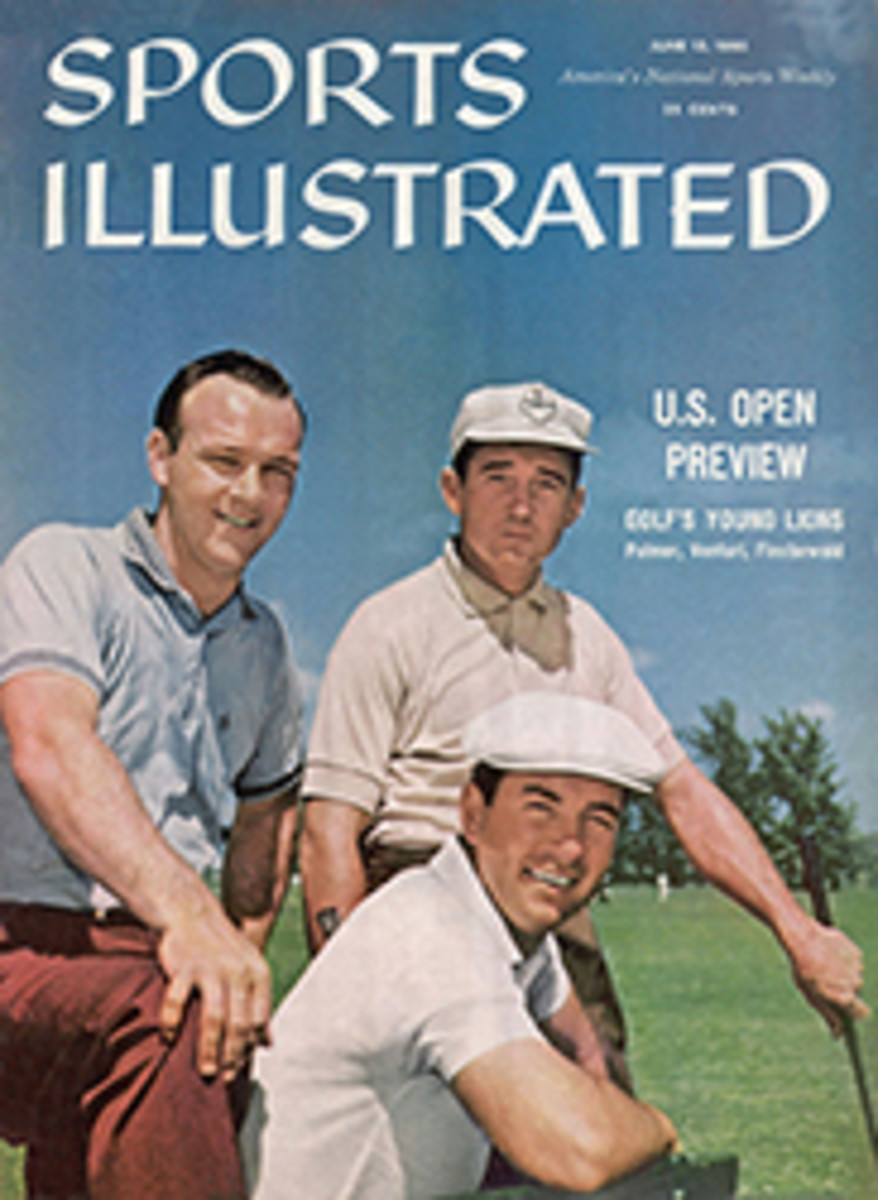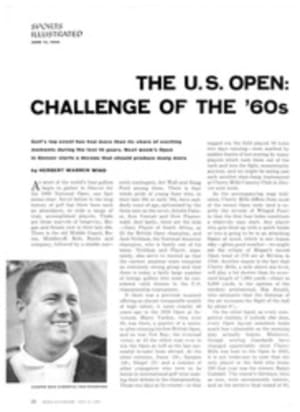
RUB-A-DUB TO AMERICA
Compared to a group of mariners gathering at Plymouth, England this week, the three men in the old nursery rhyme who all set out to sea in their tub were sailors of the most conservative order. They had each other to talk to, and they probably expected to drift back to land about suppertime. On June 11, however, six or seven occasional yachtsmen—including a farmer (above right), a baker and a famous map maker—will set out from England, each sailing solo in his own tub, sworn not to accept comfort or start their engines until they reach New York City, hopefully one to three months later.
This bizarre affair is called the Slocum Society Singlehanded Transatlantic Race by the sponsors, and a number of other things by more conventional ocean racers. The latter's coolness has not dismayed the organizers. Richard Gordon McCloskey, a wispish, waspish U.S. Information Agency employee who thought up the Slocum Society, admits "some damn fool might get lost." However, McCloskey believes the pledge of the racers "not to demand rescue operations to be launched on their behalf" shows that the society is living up to the credo of its spiritual model, old Joshua Slocum, first man to sail all the way around the world alone.
Another devotee of the Slocum tradition, and an opponent of yachting's status quo, is H. G. (Blondie) Hasler, a former commando (D.S.O., O.B.E.) who helped McCloskey organize the Transatlantic contest. Hasler hates just about everything connected with ocean racing the way it is run today. The way most boats are built now, according to Hasler, is "merely to defeat a rating rule...prostituting the art."
This race, Hasler thinks, will produce an entirely different kind of sailing. The maverick vessels that are going to try to cross are outfitted in splendid unorthodoxy, with everything from cases of beer to weather-vane steering gear. Hasler has rigged his own 25-foot Jester so that he can sail it merely by poking his head and arms through a waterproof cowling that serves as a cockpit. "Progress," says Hasler, "is made in the teeth of the opposition of an incredible number of experts."
Although only two of the entrants have ever sailed the ocean alone before, all of them have done some singlehand cruising. Val Howells, a bearded Welshman, practiced for the race by sailing alone last summer from Wales to Corunna, Spain and back. "When you've never sailed singlehanded," says Howells, "it's fear that is uppermost in the mind—the fear of being afraid. Now that I have conquered that, I can conquer the Atlantic." To be sure that he stays in a positive frame of mind, he plans to sustain himself principally on home-cured Welsh ham and cans of beer.
The only doctor in the race—and a real devotee of singlehanding—is David Lewis, sailing a 25-foot Vertue hull. Mindful of the hallucinations of Joshua Slocum, who had a long but entirely fanciful encounter with a bearded foreign sailor off the Azores, Lewis has brought along a little tape recorder. If Lewis has any hallucinations of his own, he intends to record them—provided, of course, that he knows one when he has it.
The best bet to win is Francis Chichester, a London map maker. Chichester's boat, a 39-foot cutter named Gipsy Moth III, is the biggest in the race. As an experienced singlehander, Chichester has equipped it with a special wind vane which will steer the boat while the skipper sleeps below.
The long shot, and the one who may be able to present the most up-to-date credential for singlehanded racing, is Arthur Piver of Mill Valley, Calif. The only American entry, Piver built himself a trimaran and set off from Swansea, Mass. for the starting line about three weeks ago. However, at post time the Society racers were still waiting for Piver to show up, and it seemed likely the race would go off without him.
The only other racer with Transatlantic experience is Jean Lacombe, a Parisian who in 1955 sailed an 18-foot sloop of his own design from Toulon, France to San Juan in 68 days. On arrival, he took on a job as a baker at a hotel, then sold the boat, went to New York and worked as a free-lance photographer while he wrote A moi l'Atlantique. This time he will try it in a 21-footer but has announced no plans for a new book.
No matter who writes what or who wins the race, Organizer McCloskey is patently certain the whole undertaking is worthwhile. And he is just as sure that none of his contestants are crackpots. He says, "We would dearly love to see those idiots kept off the water who go to sea without knowing what they are doing and then cost the Coast Guard $20,000 for an air-sea search."
TWO PHOTOS
BEER-LOVING FARMER, Valentine Howells of Narbeth, South Wales, sold his farm to buy 25-foot Folkboat Eira (below), plans to subsist mainly on ham, chicken and Welsh brew during 3,000-mile crossing.
TWO PHOTOS
MAP MAKER Francis Chichester studies possible routes from Plymouth to New York. Chichester's 39-foot Gipsy Moth III (below), biggest boat in race, is rigged with wind vane astern. Vane, attached to steering gear, keeps boat on course even when the skipper is asleep in his bunk.
PHOTO
LATE ENTRY is trimaran, which loft the U.S. on May 11 in dash for starting line.
TWO PHOTOS
CO-FOUNDER of race, Blondie Hasler, peers through a unique manhole which serves as cockpit on his decked-over 25-footer. From hole, Hasler can handle all of vessel's essential tackle, including Chinese lug sail (below), which he feels is the finest hard-weather rig ever developed.

